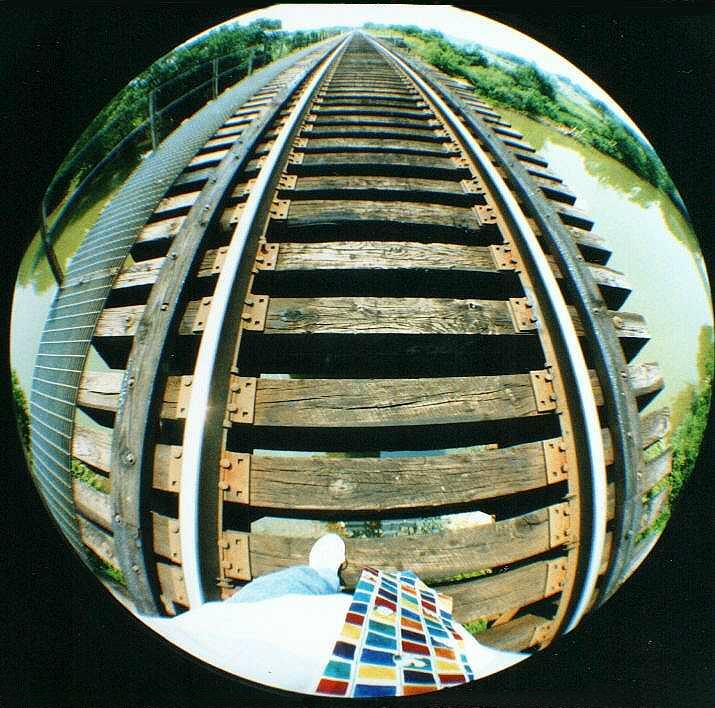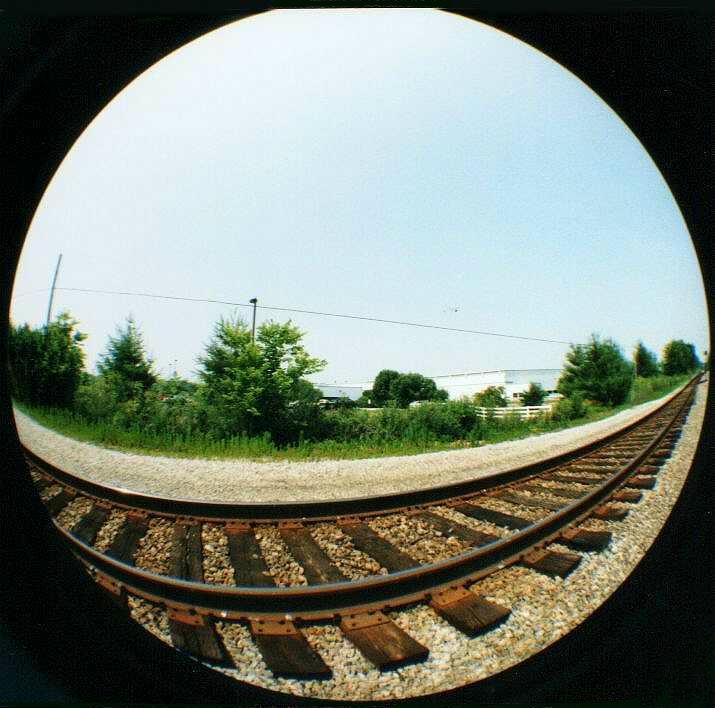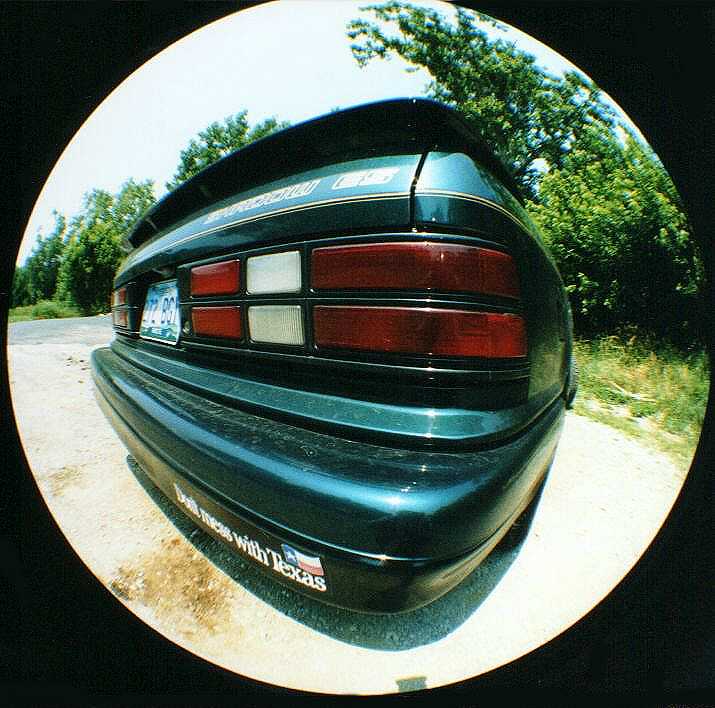|
||
While they're certainly not comparable to real fisheye lenses, the cheap 0.42x adapters can take decent photographs if you stop well down and don't put too much demand on edge sharpness. Here are a few examples: 
This one was taken with a Spiratone Curvatar 0.42x adapter on a Canon 50/1.8 normal lens. Note the corners get soft, but the detail in the metal grating still holds up reasonably well at f/16. 
Another shot on the Canon 50, this gives an idea of the coverage of the lens, although the machine prints crop off a fair amount around the edges. Corner to corner coverage with this lens is about 150 degrees (note my foot at the bottom of the frame). 
A self-portrait taken by the simple expedient of holding the camera at arm's length and using the self timer. Sharpness, again, is decent when detail isn't placed at the edges and the aperture is small, and with a composition like this the "fisheye" perspective isn't noticeable. Going Full Circle: 
Of course, the other neat trick is to put the adapter on a 28mm (or wider) wide-angle lens instead of a 50, so you get a full circle fisheye effect. This was shot using a 28/2.8 Vivitar on an OM1; using a wider lens gives a smaller circle, but the angular coverage is fixed by the adapter at about 150 degrees. Grey haze in the corners is from a lack of light baffling in the adapter; you wouldn't see this if you'd been using a $1000 name-brand fisheye. Here are some more full-circle examples, this time with the attachment mounted on a 28/2.8 Zuiko on another OM1 (the full circle DOES fit on the negative with a 28mm prime lens; the machine prints cropped a little too far at the top in these): 
Same bridge as above; since you see all the way to the edges now, softness and chromatic aberration are more apparent. It really works a little better in black and white... 
The view isn't a full 180 degrees: you can see the track all the way to the horizon in only one direction. 
On the other hand, it's WAY more than 90 degrees. The little rectangle at the bottom edge is the shadow of the lens in this photo of my car, taken at noon on the summer solstice (maybe I should have washed the car first...) 
How bad can it get? About this bad. Taken wide open at f/1.8, this image shows sufficient sharpness loss to mask the effects of handholding at a slow shutter speed, and makes it impossible to identify individuals in the photo - ideal for avoiding those pesky model release hassles..... ~~~~~~~~~~~~~~~~~~~~~~~~~~~~~~~~~~~~~~~ Just to bring things up to date: below are a couple of digital shots with the 30-year-old Curvatar, this time used with a Canon XTi (400D) DSLR and 10-22mm zoom set at 17mm (the 18mm wide limit of the kit lens does not quite permit a full circle image). The shot of the car had the lens set at f/14, the one of the sky was at f/8 (a bit fast for use with the Curvatar).  
The Curvatar was not attached to the lens for these shots, just held against the filter on the front... |
||
|
|
||
|
|
||
|
|
||
|
|
||
|
|
||
|
|
||
|
|
||
|
